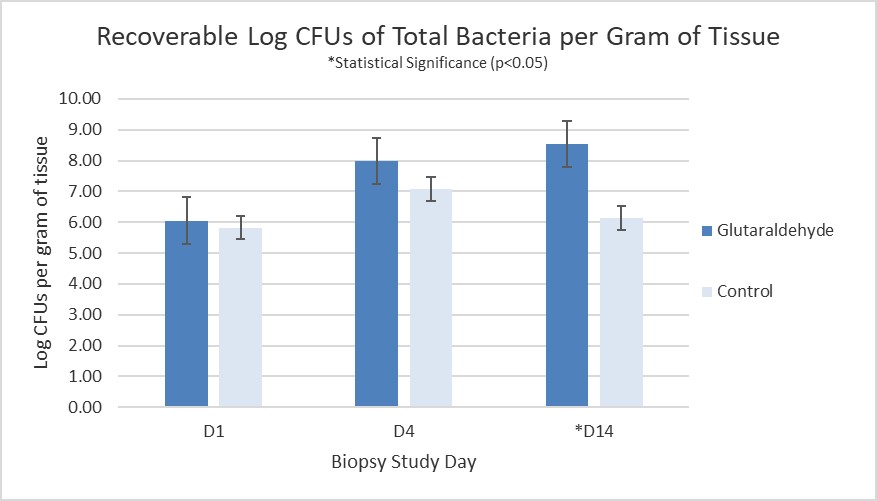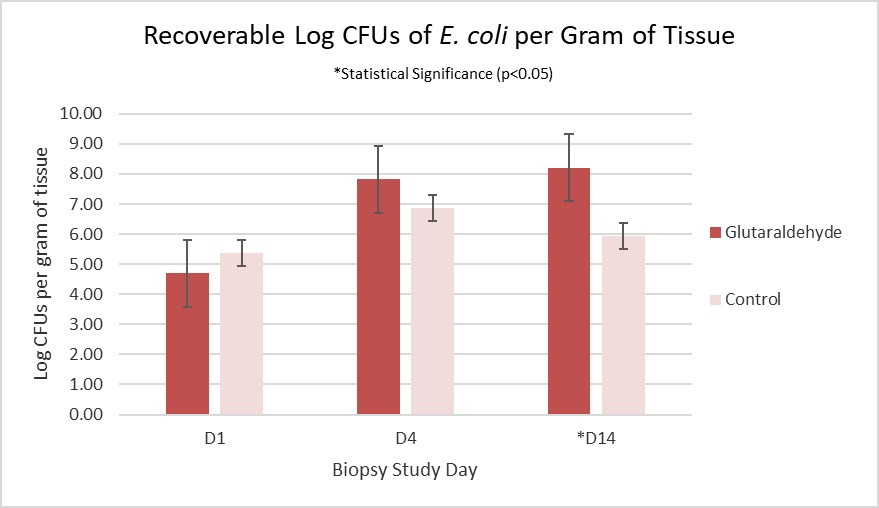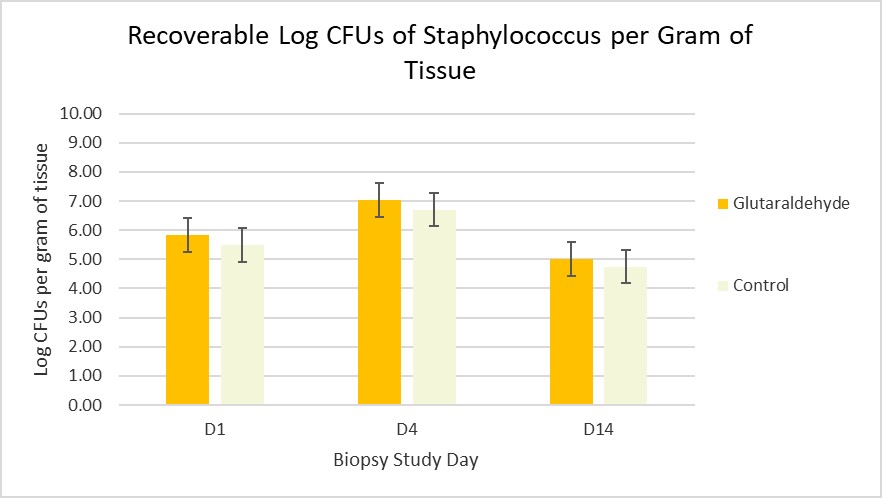Pig Delayed Wound Healing
BRIDGE PTS has developed and refined a novel, porcine chronic wound healing model by treating the wounds with a chemical crosslinker to create an accelerated aging phenotype in the wound bed. These artificially aged wounds increase the time to full closure by more than 70 days, but can still be rescued through mechanical debridement based on studies using our standard Red Duroc scarring model and the Yorkshire wound healing model.
Additionally, a stable biofilm infection can be achieved with at least three clinically-relevant bacteria (S. epidermidis, P. aeruginosa, and E. coli).
- Duration of study – 14+ days
- Lead time – 30 days
- Standard results – Wound size measurements, Microbiology, Histology
recover with mechanical debridement
The figure below demonstrates the ability of the crosslinked wounds to be recovered using mechanical debridement with little lag time compared to control wounds.
Controlled delay
We are able to control the healing delay by using varying percentages of a chemical crosslinker, as seen in the figure below.
Recoverable bacteria
The stable biofilm infection is surviving and recoverable for up to at least 14 days, with crosslinked wounds allowing bacteria to proliferate more than their control counterparts.




- Wright JB, Lam K, Buret AG, Olson ME, Burrell RE. Early healing events in a porcine model of contaminated wounds: effects of nanocrystalline silver on matrix metalloproteinases, cell apoptosis, and healing. Wound Repair Regen. 2002 May-Jun;10(3):141-51
- Olson ME, Wright JB, Lam K, Burrell RE. Healing of porcine donor sites covered with silver-coated dressings. Eur J Surg. 2000 Jun;166(6):486-9.


